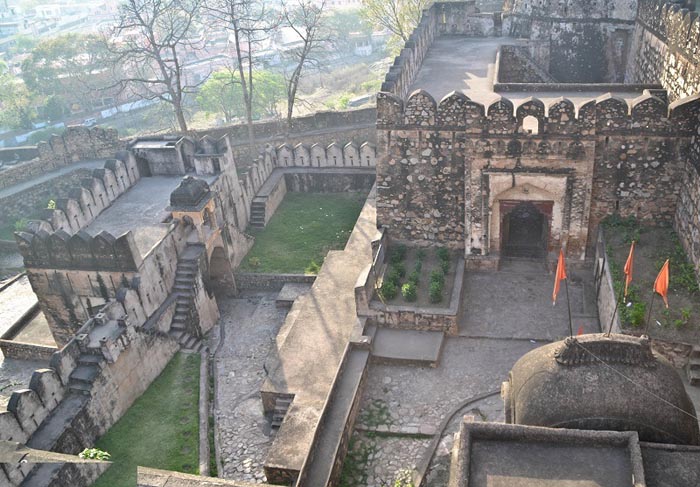Jhansi Fort

Information on Jhansi Fort (Jhansi, Uttar Pradesh) - History & Architecture
Jhansi Fort is also known as Jhansi ka Kila which is located in large top of hill named Bangira of Uttar Pradesh. It is one of the best invigorated areas of Uttar Pradesh and India. King Bir Singh Deo specially made this fort during 17th century. The fort was created in order to serve as a military throttlehold and barracks. It played vital part throughout the war for Indian independence. However, in later days Jhansi Fort was transformed into a residential place.
Jhansi Fort Architecture
Jhansi Fort is an architectural glee owing to its huge size and attractiveness. There are 10 entrances of the fort and some of the names of these entrances are Datia gate, Jharna gate, Chand gate, Sagar gate, Orcha gate, Laxmi gate and Unnao gate among others. Jhansi Fort has an area of about 15 acres with 312 meter length and 225 meter width. Apart from that, there are about 22 columns with massive strengthening walls secluded by a trench on every sides. The devastated mainstay of eastern side of Jhansi Fort was recreated by the British rulers. They also added a surface to the fort.
There are various prominent attractions inside Jhansi Fort such as temple of Lord Shiv and temple of Lord Ganesh which are situated at the entrance of the fort. There are guns and a popular cannon named 'Kadak Bijli' in the fort which were used in the rebellion against British in the year 1857. Nearby the Jhansi Fort, there is a palace named Rani Mahal which was created in late 18th century. At present, this palace was transformed into a museum which houses assortment of statues. It provides an insight regarding the momentous history of British reign.
Jhansi Fort History
Jhansi Fort observed various significant events in the way of Indian history. Jhansi was a stranglehold of the kings of Chandela. However, in 11th century the place lost its significance. Under King Bir Singh, Jhansi again rose to the eminence. In 1613, he constructed the Jhansi Fort. Throughout the term of Naroshankar which was made in the year 1742, King Bir Singh not only extended the tactical significance of Jhansi Fort, but also created various structures inside the fort.
Jhansi Fort was a key throttlehold throughout the Sepoy rebellion which occurred in the year 1857. The rebellion was directed by none other than queen of Jhansi, Lakshmi Bai or popularly termed as 'Jhansi ki Rani'. When the rebellion rose, some people of 12th native infinity held Jhansi Fort in order to contain treasures and magazines. These were used against the battle with European officers. During the rebellion, Queen Laxmi Bai put herself at the leader of the rebel. In early 1858, the collective forces of two British generals defeated the queen of Jhansi. Underneath the wall of Jhansi Fort, there is a bizarre blood diorama of the battle in which Lakshmi died. Afterwards, British people conceded the fort to the king of Scindia in the year 1858. However, in later days, i.e. in 1868, British people swap over the fort for Gwalion.
Jhansi Fort Tourism Importance
Jhansi Fort is the landmark of Jhansi and it is a popular place to visit. The fort stands as ancient history of more than 400 years past which makes it a place with rich historical significance. Tourist can also enjoy various structures inside Jhansi Fort such as the temples, the cannons and the museum. Besides, queen of Jhansi was also quite popular for her bravery and greatness to stand against the British rulers which makes, Jhansi Fort very renowned.
- Andaman Nicobar Monuments
- Andhra Pradesh Monuments
- Assam Monuments
- Bihar Monuments
- Chhattisgarh Monuments
- New Delhi Monuments
- Goa Monuments
- Gujarat Monuments
- Haryana Monuments
- Himachal Pradesh Monuments
- Jammu and Kashmir Monuments
- Karnataka Monuments
- Kerala Monuments
- Madhya Pradesh Monuments
- Maharashtra Monuments
- Odisha Monuments
- Punjab Monuments
- Rajasthan Monuments
- Tamil Nadu Monuments
- Telangana Monuments
- Uttar Pradesh Monuments
- West Bengal Monuments